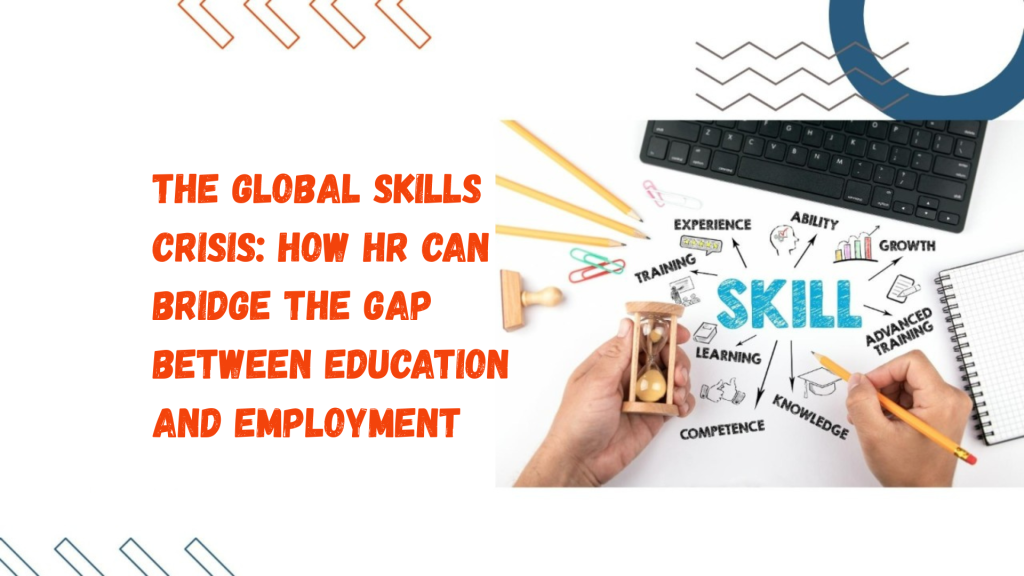Understanding the Skills Crisis
The global workforce is facing a major disruption — one that’s not due to a lack of talent, but a lack of the right skills. While millions of fresh graduates enter the job market every year, employers across industries report increasing difficulty in finding candidates who are “job-ready.” This disconnect between academic training and real-world requirements has created a global skills crisis. The problem is not confined to any one country or sector — it is a worldwide issue affecting everything from technology and healthcare to logistics and finance. The rapid advancement of digital technologies, automation, and artificial intelligence has only widened this gap, making previously valuable skills obsolete and demanding new, advanced capabilities at an accelerated pace.
Root Causes Behind the Crisis
The skills gap is caused by multiple factors, many of which stem from outdated education systems that are slow to adapt. Traditional academic models often focus more on theory than practice, leaving students underprepared for the realities of the modern workplace. In contrast, employers are now looking for candidates with practical expertise, digital fluency, critical thinking, and adaptability. Another contributing factor is the rapid pace of technological change, which continuously reshapes job roles and expectations. Even working professionals struggle to keep up, and many find themselves at risk of redundancy without opportunities for upskilling or reskilling. The mismatch is further exacerbated by the lack of collaboration between educational institutions and industry leaders.
The Strategic Role of HR in Closing the Gap
Human Resources is uniquely positioned to become the bridge between education and employment. HR professionals are no longer just responsible for hiring and compliance — they are now strategic partners who influence talent development and workforce planning. To address the skills crisis, HR needs to shift its focus from traditional recruitment to skills-based talent management. This means hiring based on capabilities rather than degrees, investing in employee development, and creating partnerships with educational institutions and learning platforms. It also involves implementing programs that support continuous learning and professional growth within the organization.
Key HR Strategies Include:
- Building partnerships with universities and vocational institutions to align curriculum with industry needs
- Promoting apprenticeship and internship programs to give students real-world experience
- Adopting skills-based hiring practices over degree-based qualifications
- Investing in employee upskilling and reskilling through L&D programs
- Partnering with edtech platforms for digital learning and certifications
- Using workforce analytics to identify current and future skill needs
- Encouraging internal mobility and career pathing based on skill acquisition
- Establishing mentorship and coaching systems to support soft skill development
Global Examples and Case Studies
Several leading companies and governments are already taking action to combat the global skills crisis. In India, for instance, companies are collaborating with edtech firms like upGrad and Simplilearn to reskill their workforce in AI, data analytics, and cybersecurity. Multinational companies such as Amazon and IBM have launched large-scale reskilling initiatives to equip their employees for future roles. Governments, too, are creating national skills development frameworks, digital job marketplaces, and public-private partnerships to ensure young people and mid-career workers alike have access to training opportunities. These efforts show that tackling the skills gap is possible — but only with proactive, coordinated efforts led by HR and business leaders.
Long-Term Benefits of Closing the Gap
When HR departments actively work to bridge the skills gap, the long-term benefits are substantial — not just for organizations, but for the economy and society as a whole. Companies benefit from improved productivity, innovation, and retention, while employees gain career growth, job satisfaction, and financial security. Moreover, a skills-ready workforce enhances national competitiveness and reduces unemployment, particularly among youth. HR’s involvement in this transformation is critical. By treating learning as a lifelong journey and skills as a renewable resource, HR can build agile, future-ready organizations equipped to thrive in a constantly changing world.
Conclusion –
The global skills crisis is one of the most urgent challenges of our time, but it is also an opportunity — an opportunity for HR to redefine its role and lead the way toward a more dynamic, responsive, and equitable labor market. By prioritizing skill development, fostering industry-academic collaboration, and embracing technology-driven learning, HR can help close the gap between education and employment. The future of work depends on action taken today. HR must rise to the occasion — not just as a support function, but as a catalyst for workforce transformation.

